Research - Selected Projects (FY2018-FY2019) -
A01:Selected Research Projects (FY2018-FY2019)
Generation and conversion of stem cells during two-step shoot regeneration
| PI | Munetaka Sugiyama | Graduate School of Science, The University of Tokyo | 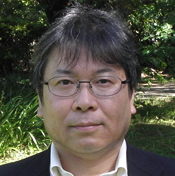 |
Plants can regenerate organs through generation and conversion of stem cells. In plat tissue culture, two-step protocols, in which explants are first cultured on auxin-rich medium and then cultured on cytokinin-rich medium, are widely used for the induction of shoot regeneration. Recent findings show that, in this culture system, root apical meristem (RAM)-type stem cell niche is generated in response to auxin and converted into shoot apical meristem (SAM)-type stem cell niche in response to cytokinin. We have studied two-step shoot regeneration of Arabidopsis with various mutants and inhibitors, and obtained results suggesting that endogenous IAA alters the status of RAM-type stem cells and that RGD3, a gene encoding BTAF1, participates in the conversion into SAM-type stem cell niche. In the present research, we analyze roles of endogenous IAA and RGD3 in the two-step culture system with the aim of elucidating dynamics and regulations of stem cells during shoot regeneration.
Asymmetric division and cell cycle regulation in plant stem cells
| PI | Masaki Ito | Institute of Science and Engineering, Kanazawa University |
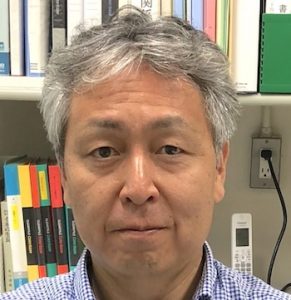 |
A stem cell undergoes asymmetric division producing one daughter cell that behaves as original stem cell, and another daughter cells that is eventually differentiated into other type of cell. Plants achieved multicellularity independently of the animal lineages, and may have developed specific mechanisms for asymmetric division of stem cells during their own evolutional process. In this study, we focus especially on asymmetric divisions during stomatal development, and challenge the mechanisms for distributing different cell fates into two daughter cells. In our previous studies, we observed several cases where cell cycle regulators may affect cell division pattern and cell fate determination during stomatal development in Arabidopsis. Based on these observations, we will investigate the novel relationship of cell cycle regulation with asymmetric division and cell fate determination in plant stem cells.
Analysis of polarity formation and asymmetric cell division of stomatal stem cell
| PI | Tomoo Shimada | Graduate School of Science, Kyoto University | 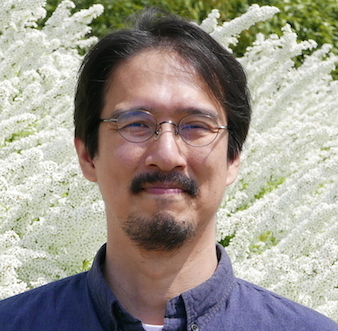 |
Asymmetric cell division (ACD), which produces two distinct daughter cells, is a fundamental process that supports the development of multicellular land plants. Stomata, which are valves for gas exchange, are generated through several rounds of ACD. Previously, we identified and characterized a chemical compound, Bubblin, which affects stomatal stem cell polarity. Bubblin perturbed stomatal ACD, resulting in the generation of two identical daughter cells. The goal of this research is to elucidate molecular mechanisms responsible for the formation of cell polarity and ACD of stomatal stem cell.
Elucidation of the molecular mechanisms for auxin-mediated formation of pluripotent stem cells
| PI | Ryuichi Nishihama | Graduate School of Biostudies, Kyoto University | 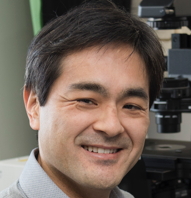 |
Land plants perform 3D morphogenesis, which depends on the stem cells that have been formed de novo in the initial stage of development. The phytohormone auxin has been implicated in de novo formation of stem cells. However, its molecular mechanisms, especially for auxin-mediated gene regulation, remain to be clarified. In a basal land plant, the liverwort Marchantia polymorpha, young sporeling cells can give rise to all cell types and thus are in the totipotent state, while the stem cells in the thallus, so-called apical cells, are in the pluripotent state. Previous studies suggested that auxin signaling plays an essential role in the formation of apical cells. In this project, by making full use of characteristics and powerful genetics of M. polymorpha, we will elucidate the molecular mechanisms for auxin-mediated transition from the totipotent to pluripotent state, especially in terms of gene regulation and chromatin status. This study is expected to uncover the principle of stem cell formation conserved in land plants. Moreover, we will aim to define the totipotency and pluripotency of plant cells at the levels of gene expression and chromatin status.
Mechanisms of cell wall dependent stem cell fate determination
| PI | Keiko Sakakibara | Graduate School of Science, Rikkyo University |  |
Mechanical properties of cell wall are proposed to play an important role in stem cell and organ formation in land plants. However the mechanism of such regulation is not well-understood. We reported that two Physcomitrella patens WOX (WUSCHEL-related homeobox) homologs PpWOX13LA and PpWOX13LB, which are relatives of stem cell regulators in flowering plants, regulate new stem cell formation during protoplast regeneration through the up-regulation of cell wall loosening genes, such as β-expansins. We hypothesized that regulation of cell wall character is important to maintain the stemness of plant cell. To test the hypothesis, we will analyze the cell wall component and cell wall character of new stem cell in strains with genetic manipulation to modulate the level of cell wall controlling genes and its impact on the cell fate.
Molecular mechanisms controlling histone modification changes for stem cell formation in land plants
| PI | Masaki Ishikawa | National Institute for Basic Biology |  |
Epigenetic modifications, including histone modifications, function in stabilization of cell-specific gene expression programs to maintain cell identities in both metazoans and land plants. On the other hand, in land plants, de novo formation of stem cells is widely observed during post-embryonic development and regeneration, indicating that land plants have a high intrinsic ability to reprogram differentiated cells to stem cells. However, it has been unknown about molecular mechanisms that control the erasure of somatic epigenetic patterns. In the moss Physcomitrella patens, when a gametophore leaf is cut and incubated on culture medium, leaf cells facing the cut are reprogrammed to chloronema apical stem cells. In screens for factors involved in the reprogramming, we found that ectopic induction of STEMIN1 transcription factor directly changes gametophore leaf cells to chloronema apical stem cells. In this study, we aim to reveal molecular mechanisms implicated in the erasure of epigenetic information for stem cell formation by the STEMIN1 induction.
Molecular mechanisms underlying stem cell reformation by abiotic stresses
| PI | Akira Iwase | RIKEN Center for Sustainable Resource Science |  |
Vascular plants develop their tissues from thee different types of stem cells, which are located in the shoot apical meristem, root apical meristem and vascular cambium. Landmark studies showing whole plant regeneration from a single mesophyll protoplast clearly demonstrates that plants can reform all types of stem cells even from a differentiated cell. This reformation ability is often triggered by abiotic stress; however, the molecular mechanisms underlying this control remain poorly understood. In this study, we investigate how transcription factors mediate reformation of stem cells in Arabidopsis following abiotic stress.
Fate determination of haustorial stem cells in parasitic plants in Orobanchaceae
| PI | Satoko Yoshida |
Institute for Research Initiatives, Nara Institute of Science and Technology |
 |
Parasitic plants in Orobanchaceae form an invasive organ haustorium on their roots in response to host signal. The haustorial apex contains highly dividing meristem-like cells, which we designate haustorial stem cells. The haustorial stem cells keep dividing until the haustorial apex reaches host tissues, and after reaching host tissues they transform to intrusive cells, special cells with elongated shape and a function for host intrusion. In this project, we will investigate fate determination mechanisms of haustorial stem cells, using parasitic plant mutants that have defects in regulation of cell division and fate transition of the haustorial apex.
A02:Selected Research Projects (FY2018-FY2019)
Unveiling the developmental principles of plant stem cells by studying the moss, Physcomitrella patens
| PI | Tomomichi Fujita | Graduate School of Science, Hokkaido University |  |
The outwardly growth of protonemal stem cells in mosses allows us to observe them at the unicellular level. Taking advantage of this, we are going to uncover the molecular mechanisms of cell polarity and asymmetric cell division in plant stem cells. To this end, we will study a plant-specific transcription factor that is involved in these developmental processes in the moss apical stem cells. We will also study the mechanism on how the apical stem cells switch between asymmetric and symmetric cell divisions under various challenging environmental conditions. Furthermore, the relationship between cell stemness and plasmodesmata-dependent cell-cell communication will also be explored. Thus our research attempts to tackle the fundamental aspects of stem cell development in plants.
Massive mitochondrial fusion and genome amplification in plant stem cells
| PI | Sin-ichi Arimura |
Graduate School of Agricultural and Life Sciences, The University of Tokyo |
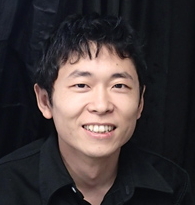 |
Mitochondria undergo fission and fusion constantly. The dominance of fusion makes mitochondria longer or larger, and such enlarged mitochondria are transiently or stably observed in some kinds of plant stem cells. These plant stem cells have multiple hyperploid mitochondria. In contrast, each mitochondrion in somatic cells has DNA on average less than one mitochondrial genome. The relationships of mitochondrial morphology and their genome maintenance in plant stem cells and the physiological meaning of the morphology will be studied by using Arabidopsis and its mutants of mitochondrial morphology.
Visualization of plant hormones with high spatiotemporal resolution accelerating plant stem cell research
| PI | Tetsuya Kitaguchi |
Institute of Innovative Research, Tokyo Institute of Technology |
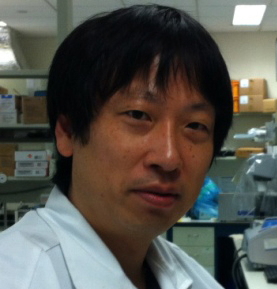 |
Plant hormones play important roles in plant development, such as proliferation, differentiation, and maintenance of stem cells. However, there are not many sensors visualizing plant hormones with high spatiotemporal resolution under optical microscope. Therefore, visualization of distribution and dynamics of plant hormone in plant stem cells dramatically accelerate not only plant stem cell research but also plant physiology. In this study, we develop plant hormone sensors using Flashbody technology which fuses fluorescent protein and antibody, and detect spatiotemporal dynamics of plant hormones in shoot apical meristem and root apical meristem.
Establishment and maintenance of pluripotent stem cells during plant fertilization and embryogenesis
| PI | Hidenori Takeuchi |
Institute of Transformative Bio-Molecules, Nagoya University |
 |
During angiosperm fertilization process, the egg cell forms into the zygote and acquires “stemness” by fusing with the sperm cell nucleus. The fertilized egg cell, the zygote, starts dividing and developing into embryo in female tissue. In the fertilization and embryogenesis, epigenetic information is dynamically reorganized to establish and maintain “stemness” for proper embryo development. In this study, we analyze epigenome dynamics in developmentally programmed fertilization and embryogenesis processes. We also attempt to identify key factors involved in deposition of the centromeric histone H3 variant CENH3 that is an epigenetic mark essential for proper kinetochore formation. Finally, we aim to understand mechanisms of stem cell establishment and maintenance controlled by epigenome dynamics and chromosome maintenance.
Molecular basis for stemness of the pericycle
| PI | Tatsuo Kakimoto | Graduate School of Science, Osaka University |  |
Lateral roots are produced from pericycle cells, which are located between endodermis and vasculature. In Arabidopsis, xylem-pole pericycle (XPP) cells initiate cell division in response to auxin resulting in production of the lateral root primordium. External application of auxin to a root induces cell division exclusively in XPP. In this project we will carefully rexamine the character of pericycle focusing on cell cycle regulation. Another aim is to identify a regulatory system that govern the stemness of XPP.
Redundancy and cooperativity in termination of floral stem cell activities
| PI | Toshiro Ito |
Graduate School of Science and Technology, Nara Institute of Science and Technology |
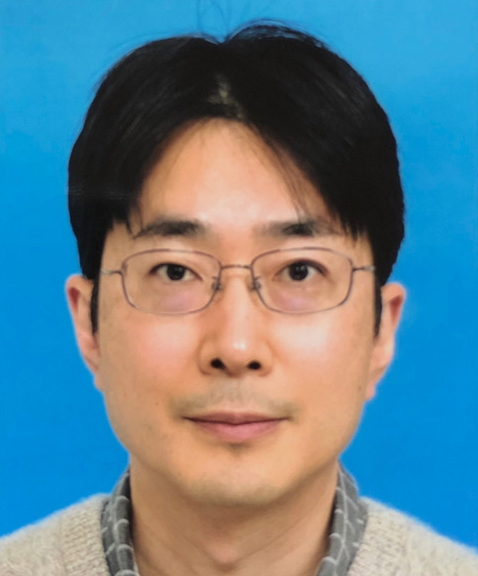 |
During flower development, the robust stem cell activities are terminated to produce seeds for next generation. We are studying genetic pathways controlling floral meristem determinacy and showing that multiple genes (transcription factors, epigenetic regulators, signaling molecules and auxin-related proteins) are involved in this process in stage- and cell type-specific manners. We plan to understand the dynamics and functions of auxin in floral meristem determinacy control through molecular genetics analyses. We also plan to grow plants under various environmental conditions (e.g. temperature and light) to study the molecular basis of environmental robustness though genetic redundancy and cooperativity.
Growth regulation and stem cell maintenance in the shoot meristem
| PI | Mitsuhiro Aida | International Research Organization for Advanced Science and Technology, Kumamoto University |
 |
The shoot meristem maintains stem cells at its summit and continuously produces differentiating cells that give rise to shoot organs such as leaves, stems and floral organs. Focusing on the functions of the transcription factors CUC1, CUC2 and CUC3, which are essential for shoot meristem formation, as well as the two classes of their downstream factors KNOX and auxin-related genes, both of which are involved in directional tissue growth, we investigate molecular mechanisms that regulate growth patterns within the shoot meristem and their significance in stem cell maintenance.
Studies on vegetative propagation in semi-aquatic plant, Rorippa aquatica
| PI | Seisuke Kimura | Faculty of Life Sciences, Kyoto Sangyo University | 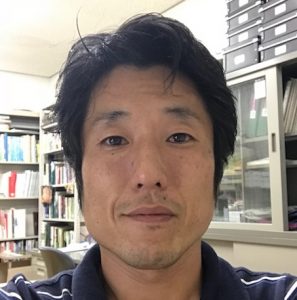 |
Aquatic plants evolved from land and modified terrestrial features to submerged environments. One of such adaptive features is high ability of vegetative propagation. Vegetative propagation is commonly seen across many of plant species, the regulatory mechanisms involved are largely unknown. Rorippa aquatica is a perennial herbaceous semiaquatic plant. R. aquatica propagate asexually in nature and they can produce new plantlets from the cut site of leaf fragments without external application of phytohormones. We will investigate the mechanism of vegetative propagation in R. aquatica to understand the principles of pluripotent stem cells underlying plant vitality.
Control of stem cell indeterminacy and characterization of intermodal stem cells in rice
| PI | Katsutoshi Tsuda | National Institute of Genetics |  |
Stem cells are generally indeterminate and maintain their mitotic potential, whereas they also need to properly differentiate upon cell fate determination. Hence, control of cell indeterminacy is one of key aspects of the stemness. In plant shoot meristems, KNOX transcription factors prevent stem cell population from differentiation, whereas these TFs are down-regulated where leaves and stems initiate. In this study, we aim to understand how shoot stem cell indeterminacy is maintained and lost during stem development. We study how KNOX TFs are down-regulated during stem differentiation from the SAM. We will also characterize the intercalary meristem, which is maintained by KNOX TFs and expected to harbor stem cells, by using laser-microdissection followed by transcriptome analyses.
Genome stability and change in shoot apical meristem
| PI | Endo Masaki | National Agriculture and Food Research Organization |  |
Maintenance of genome stability in shoot apical meristem may crucial for handing over collect genetic information to the progeny. On the other hand, for adapting themselves to the rapid environmental change, flexible genome change is preferable. In this study, we focus on the response of shoot apical meristem to DNA damage, such as DNA repair, cell cycle arrest, cell death and changing the fate of cells for surviving and try to understand the strategies of plants for survival.
